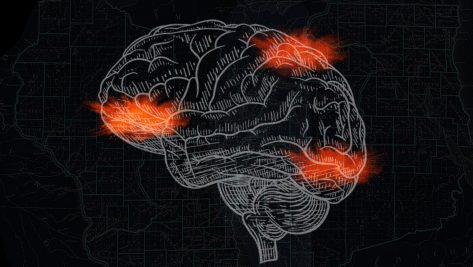Big data is a hot topic at the moment. The world has become highly technological and a major digital transformation is affecting businesses and professionals alike. The amount of data being stored is rising steadily, with no end in sight. This information—collected from multiple sources in an unstructured manner, in real time, and in vast quantities—cannot be managed with traditional tools. Most organizations therefore manage data ineffectively, although the polar opposite is true of the major tech firms.
Nowadays, just about everything is collected, stored, and recorded online. The world is digital and this disruptive revolution was sparked by big data. To contextualize this new reality, consider everything that happens in just 60 seconds on the Internet: 38 million WhatsApp messages are sent, 3.7 million Google searches are made, and 4.3 million YouTube videos are viewed. These numbers reflect the vast amounts of data that are now available to be harnessed. More than 90% of big data has been generated in just the past two years.
The “five Vs” are the key to understanding big data:
- Volume: The amount of data produced today is mind-boggling.
- Velocity: Data is generated and transmitted in real time.
- Variety: Data can be structured, unstructured, or semi-structured and comes in various forms.
- Veracity: Data is collected from multiple sources and it can be difficult to determine how accurate they are, so when you work with big data you have to assume that not everything is perfect.
- Value (the most important feature): Data will do nothing for your business unless it is relevant.
A vast amount of data is currently available to be harnessed. More than 90% of big data has been generated in just the past two years.
Generating knowledge
It is essential to ensure that your data actually generates knowledge. Processing and contextualization are therefore crucial intermediate steps. All executives make critical decisions; the most effective decisions are based not on instinct but on facts and data. How have successful organizations put this principle into practice? Netflix, for example, has decided which new projects to invest in by analyzing the habits of its viewers. Starbucks, meanwhile, has selected locations for new establishments by studying the success rates of its existing stores.
The fact is, most companies don’t know how to make appropriate use of big data. Nearly all companies face four problems that make it difficult for them to adapt to this new environment:
- Silos: A company can become disconnected if its information is locked away in different departments.
- Information analysis: Companies need to learn to work with information throughout the company—and not just with dry numbers and figures.
- Finding talent: Workers qualified for these new roles are scarce.
- Getting started with big data: Some companies find it necessary to reorganize how they work.
To connect with the audience and make sure they don’t get lost, it is vital to humanize the information and provide context.
The importance of data presentation
In order for data to be memorable, it must be presented correctly. Ninety percent of all information is transmitted visually. People remember nearly everything they see, but not everything they hear. Ask yourself the following question: How can I tell my story with big data? You first have to understand the problem and the available data. In many cases, visual resources are used but the problem is not identified. When using graphs, keep it simple and eliminate any superfluous information. It is also vital to humanize the information and present it in context so that the audience doesn’t get lost. And don’t forget to use color and movement when possible, which can make data less tedious.
Not everyone has to be a specialist in big data, but everyone should at least know what it is. To delve into this world, you need to acknowledge that technology is evolving quickly and be motivated to stay up to date. The tools are within reach for virtually everyone. We need to stop thinking of information as mere figures and instead recognize it as an element of value. For organizations, this is a chance to grow. The biggest mistake would be to decide that this has nothing to do with your company and let this great opportunity slip away.
© IE Insights.











